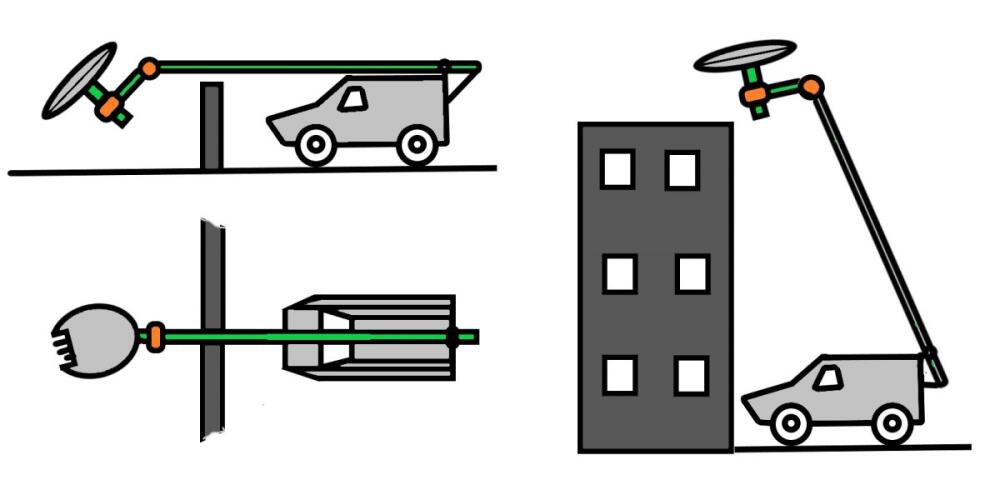
Snipers are rifles with an optical sight aimed at destroying enemies over long distances, and can also be used for hunting.
Snipers are used by specially trained soldiers, snipers trained to observe enemy positions covertly, and covert action on the enemy's living force.
The biggest danger to snipers is opponent snipers.
In order to reduce the danger to snipers, these weapons could be plac on armored vehicles so that soldiers could act on the enemy to be protected in the vehicle. The sniper rifle, or more, with their equipment, could be attached to any type of armored vehicle, or self-propelled cannon and howitzers.
Setting up could be very simple.
At the rear end of the armored vehicle one first pivot joint with a servo motor would be firmly attached. A joint up to ten meters long would be mounted on that joint, pointing forward over the entire length of the vehicle. Servo - The motor would lift the tube up or down.
At the top of this tube there should be another rotating joint with a servo motor used to guide the sniper up and down.
On the front of this joint there would be a short tube that has a third pivot on its front with a servo motor that rotates the sniper from left to right. On the second part of this pivot joint there is a short tube facing upwards, which at the top has an armored ellipsoidal dome inside which contains one or more sniper rifles.
Within the ellipsoidal dome, it is most optimal to install an automatic small-caliber rifle to fight close infantry hidden behind shelters such as walls, low buildings, bushes. or trees. A strong 7.2 to 12 mm caliber rifle should be fitted with this rifle. The third weapon should be a rifle larger than 20 mm, which would be used to pierce opposing armored vehicles, walls or bunkers.
All three rifles should be coupled with a strong optical sight and a daytime night camera so that the sighting inside the vehicle can operate both day and night. Each weapon should also have two small servo motors for precision aiming.
The control of all servo motors and cameras would be done with cables passing through the specified tubes and pivot joints. In this way the cables would be protected from enemy fire. In the event of a failure, the first pivot joint should be capable of mechanical lowering in order to remedy the failure.
An armored vehicle equipped with this sniper attachment could act independently of the protection of the surrounding pedestrians. The crew could defend themselves without hiding behind nearby objects without leaving the shelter. At rest, the sniper attachment could be mounted high in the air and the crew could control the environment without exiting the vehicle and without the support of other soldiers. In combat, enemy soldiers hiding in or behind buildings would no longer be protected. When an armored vehicle hits a wall, the sniper's turret is mounted over the wall, acting freely on the hidden enemy.
Armored vehicles with such sniper accessories would be most useful for combat in urban locations, for combat in very uneven terrain, and in bushes and forests where the opponent has many natural shelters to hide and conceal.
Such sniper attachments mounted on self-propelled guns, or howitzers would serve mainly to protect self-propelled vehicles from attack by covert enemy saboteurs.
Other of my technical analyzes and innovations can be found in this book.
Tags
Featured articles